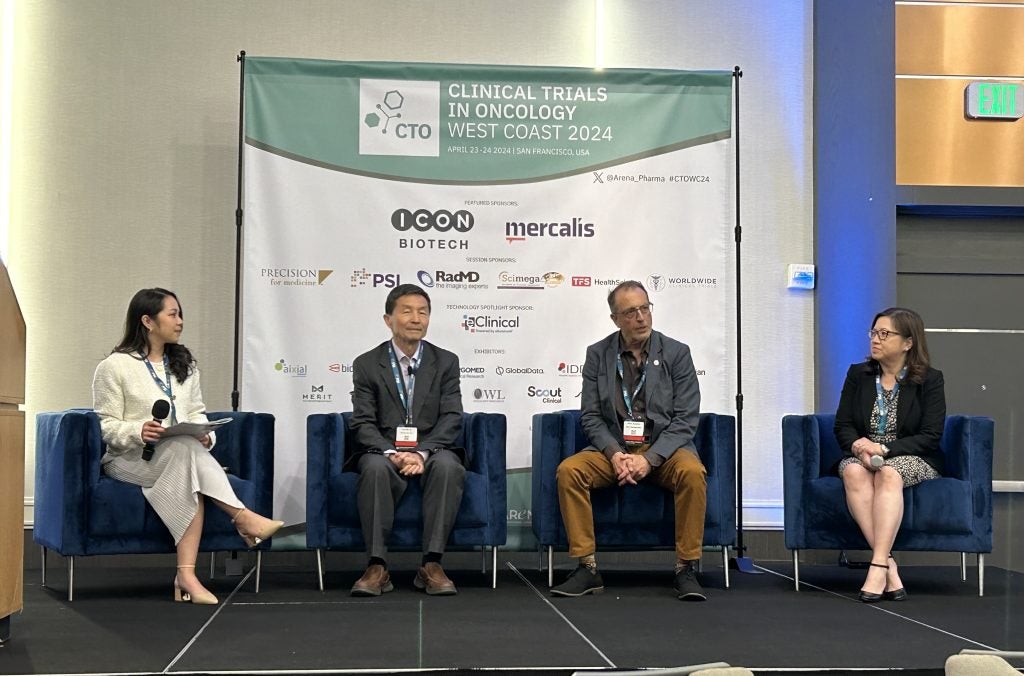Having battled cancer for the best part of a decade, patient advocate, Jack Whelan, knew a thing or two about clinical trials. Having relapsed on multiple occasions, Jack understood the need for patients to explore novel treatments in the hope of finding a cure. With patient-centricity now forefront and center in the minds of many conducting clinical trials, the need to put patients first has never been more vital. Before his passing in late 2017, Jack shared his thoughts on patient-centricity, from a patient’s perspective…
After giving talks at a variety of life sciences conferences, I always stay and listen to the “experts.” The popular topic of patient centricity in clinical trials is front and center on the agenda. Before long, I want to shout, “you’re getting it all wrong.” However, I’m an uncommon guest; I’m a patient, a cancer survivor, still in treatment, to be exact. But I’m also a decided friend to the biopharma industry at conferences across the US and Europe.
It seems that almost all biotech and pharmaceutical companies have or will soon initiate one or more programs to achieve patient centricity in their clinical trials business. Much like the Six Sigma, TQM and ISO “quality” programs that swept across the manufacturing industry a few years back, we’re seeing waves of patient centric programs crashing (pun intended) on the beaches of biopharma. We hear “it just seems like the thing to do” or “let’s put patients first,” “we’re patient centric,” and so on.
I believe we’re making this too complicated. Firstly, it’s going to take a while to dramatically change this industry to move toward and achieve patient centricity. Business processes that have served this industry are so entrenched throughout that we fail to recognize their shortcomings. It’s no secret this industry has become risk averse, reluctant to change and often gives its business processes priority over science; yet biomedical research and science has never been better.
How well do you really know your competitors?
Access the most comprehensive Company Profiles on the market, powered by GlobalData. Save hours of research. Gain competitive edge.

Thank you!
Your download email will arrive shortly
Not ready to buy yet? Download a free sample
We are confident about the unique quality of our Company Profiles. However, we want you to make the most beneficial decision for your business, so we offer a free sample that you can download by submitting the below form
By GlobalDataLet’s also recognize a few of the most fundamental problems. The distribution channel that brings therapeutics from research labs through the supply chain to clinics to patients doesn’t facilitate communications between researchers and patients especially during the clinical trial. Even a trusted third party, a CRO isn’t allowed to talk with patients during the trial. The regulatory environment, such as the U.S. HIPAA and the EU Data Protection Directive discourages information flow needed for even basic epidemiology. The industry has given higher priority to patient privacy rather than individual and collective patient safety.
Look at the templates, business processes and assumptions that are used to help expedite FDA and other regulatory approvals. For example, for the benefit of good biometry, some clinical trials protocols “synchronize” when cohorts of patients will receive treatment. All subjectsstart on day one, all get a bone marrow biopsy on day thirty, etc. If we were truly patient-centric we’d consider the risk that all members of this cohort could have an adverse effect or serious adverse event (SAE) on day one, so in the interest of safety we’d better stagger the start date. Patients before protocols, please!
As we develop more effective novel targeted therapies, response to those therapies can often be measured in hours or days rather than weeks or months associated with conventional chemotherapy. Yet, we’re still processing that data in batch mode, entering batches of paperwork in spreadsheets or other documents and emailing to some obscure point in the cloud where someone looks at the data weeks or months after the fact. We fail to track response as soon as the data is available (for example pull blood chemistry, urinalysis, or other samples) to determine if a patient is responding or refractory to a drug. We fail to monitor changes that might indicate an emerging adverse event or SAE that must be reported to the FDA. SAEs include death, life-threatening, hospitalization, persistent or significant disability orintervention to prevent permanent impairment or damage. Please don’t tell patients you’re “patient-centric” if you’re willing to accept the present reported levels of adverse effects and incidences of a SAE.
If we claim to want to engage patients, then answer the patient’s most fundamental question- how am I doing? Give your patients the same data or biomarkers that the principal investigator uses to determine response. Sure, it can be complicated but it can be simplified. Pick the most relevant biomarkers. Help the patient understand when there is change and what this means. Understand that many patients will be sick from time to time, be passive or take what I call the “car wash approach,” just get through it, sit passively disinterested and disengaged. These patients might not be a good choice for a clinical trial. Active, engaged patients are better candidates because they’ll be pro-active about their care and participation in prudent research.
When someone from compliance or legal raises questions of patient privacy, you must raise the question of patient safety. Push back. Please use my data, my blood, my tissue, but only for the benefit of clinical research.
See patients as individuals, not subjects, members of arms or members of cohorts. Treat each patient as if he/she was a family member or someone for whom you care.
Most would agree that clinical trials have two underlying key goals: research and care. An Institutional Review Board (IRB) claiming to be looking out for the best interest of patients will say the key goal is research. “The purpose of the IRB is to ensure that all human subject research be conducted in accordance with all government, institutional and ethical guidelines.” That’s not a very patient-centric purpose. More often than not, patients see Clinical Trials as a treatment option not just research.
BioPharma and CRO firms should employ Information Technology (IT) that collects and analyzes data as soon as it’s available from any site. This data can be easily collected, aggregated and analyzed more efficiently and at less cost using current electronic Patient Reported Outcomes (ePRO) and Clinical Outcomes Assessment (COA) IT platforms and services. But these systems should be updated regularly to incorporate new predictive and prognostic biomarkers associated with each disease group as soon as they can be reliably measured. The sooner we accurately measure efficacy and safety, even when it means fail fast, the greater the savings.
The industry is making concerted efforts at Risk Based Monitoring. I think we’re not yet collecting sufficient volumes of data fast enough from multiple sites to reliably employ comprehensive data analytics and predictive analytics to identify potential patient safety issues before they emerge and to more quickly identify which patients are responding to a drug. These represent substantial savings for the BioPharma and the healthcare industry.
Coming from the information technology industry, I can vouch for the benefits of incorporating diagnostics during the design and development of IT tools. Perhaps we can learn to move the companion diagnostics (CDx) developed in research labs out to clinics along with the therapeutic. I believe biopharma should rationally value and cost-justify the real benefits of CDx so that payers willingly reimburse for these services.
Finally the industry must take a serious, objective look at the draft inserts, “Patient Information” and “Medication Guides” typically included with drug packaging and Clinical Trials “Informed Consent” forms. Read and you’ll see these documents fall short in the promise of patient centricity. In fact they are legal, risk-mitigation documents accepted without question by patients, much like the automatic-click we give when downloading software. Acknowledging these issues is a good start.








